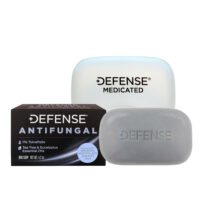For those who like to spend time outdoors, at the gym or other places that may cause the skin to become sweaty and dirty, it is essential to understand the risk of contracting a fungal infection of the skin. While not usually dangerous, these conditions can be painful, uncomfortable, and challenging to treat. Knowing more about fungal skin infections will help you identify possible problem areas and prevent recurrence.
Overview: Fungal Infections of the Skin
According to the National Library of Medicine, "Some fungi reproduce through tiny spores in the air. You can inhale the spores, or they can land on you," the latter of which cause skin infections.
Fungal infections can also be transferred from one person to another by touching something that has been affected by infected skin. Equipment users at the gym must be encouraged to clean machines before and after use.
Often, these infections become much worse when a person does not clean the area or allows it to stay warm and moist. Fungi can be difficult to kill, which is what makes these conditions hard to treat. There are several different types of skin infections caused by fungi, and they all may appear in different parts of the body.
Symptoms and Diagnosis of Fungal Skin Infections
A fungal infection will usually cause a rash on the skin, often with raised edges. Ringworm, a type of disease, causes a ring-shaped rash that looks like healthy skin in the middle. Around the outside, you'll see a ringed crust on all the sides. Different types of infections will usually cause different rashes; some are scaly, and some are fine, appearing similar to dry skin. Other common symptoms include:
- Itchiness
- Peeling skin
- Cracking skin
- The pain of the infected body part (ear, foot, nail, scalp, etc.)
- Breaking and loss of infected hair
- Crumbling and discoloration of finger and toenails
Diagnosis of the condition usually involves the placement of its effects. For example:
- Foot fungal infection: This condition causes many of the symptoms listed above to present on the feet. It is also called athlete's foot.
- Fungal ear infection: According to the NCBI, this condition is called otomycosis.
- Scalp fungal infection: This condition "begins as a small pimple which spreads outward, leaving a scaly hairless patch," as stated by the South Australia Health Department.
- Nail fungal infection: These often occur in weak, previously injured nails or can be caused by athlete's foot spreading to the nail.
- Skin fungal infection: This condition can occur almost anywhere, from the back or legs to face, chest, or groin area—also called jock itch.
If you notice symptoms like the ones above on one or more specific areas of your body, you should see a doctor to receive the proper diagnosis and treatment. Preventing recurrence of fungal infections after being treated for one of the conditions above, it is important to make changes in your life that will prevent you from experiencing them again.
- Wash your gym clothes regularly
- Clean any machines before and after use
- Wash your hands frequently
- Keep your skin, nails, and scalp clean and dry as much as possible
- Do not wear shoes in the house
The key is to allow your skin to breathe but also to keep it clean. These infections can be extremely painful, and you can do your best to avert any issues associated with them by being aware of your body's current state and the state of anything with which your skin may interact.
Understanding and Awareness of Fungal Skin Infections
Spreading your knowledge of fungal skin infections could be beneficial to you and others, especially if you spend a considerable amount of time in a place where contracting a fungal disease is common. Awareness is the key to observing, diagnosing, and preventing these conditions.
